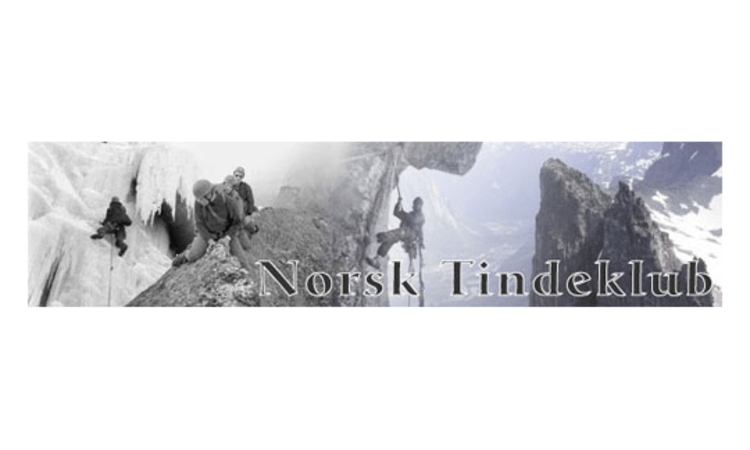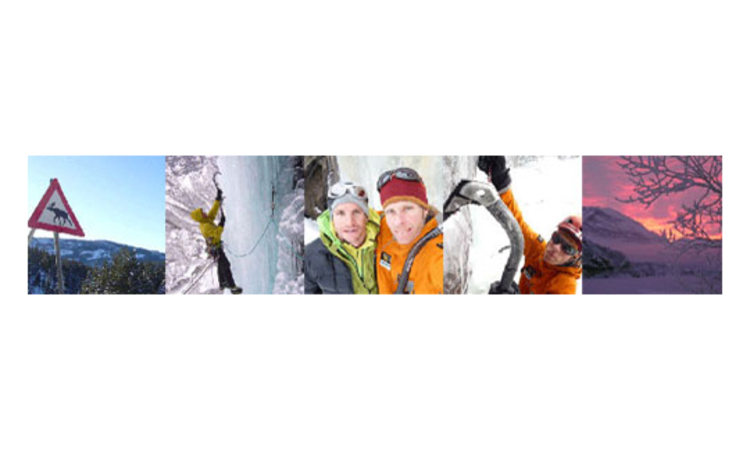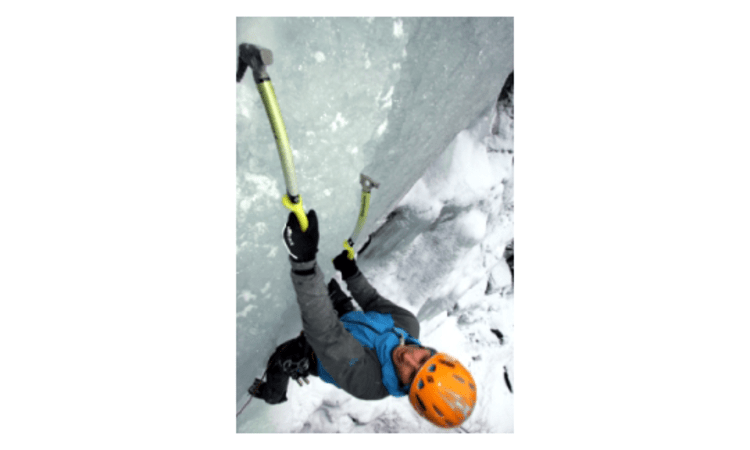Der Norwegian Alpine Club (Norsk Tindeklub) wurde 1908 gegründet, zählt etwa 500 Mitglieder und fühlt sich den Traditionen und dem kulturellen Erbe des norwegischen Alpinismus verpflichtet.
Dazu gehört nach Selbstdarstellung des Verbandes unter anderem, ethische Richtlinien zu vermitteln, die Alpinisten in Norwegen dazu veranlassen sollen, keinerlei Spuren ihres Tuns zu hinterlassen.
Die Vereinigung reagierte auf Robert Jaspers Erfolge in "Fosslimonster" (800 Meter, WI6+, M8+) und "Into the Wild" (900m, WI6 X) bei Gudvangen an der Westküste Nowegens alles andere als erfreut.
Vor allem der Einsatz (und das Hinterlassen) von Borhaken stößt auf massive Kritik.
Das Statement des Norwegian Alpine Club (Norsk Tindeklub)
February 2009 saw first ascents on two of Norway's, and probably the world's, most inspiring and adventurous ice lines: The "Fosslimonster" (800 meter, WI6+, M8+) and "Into the Wild" (900m, WI6 X), both located on the west coast of Norway. The ice lines were climbed by an international group of climbers that failed to adhere to the appropriate ethical guidelines, and did not meet the Norwegian standards of climbing in good style.
In Norway, the alpine climbing community treasures very highly our code of ethics summed up in "leave no trace". It is generally considered unacceptable to add bolted anchors on ice and mountain routes, to make it easier, safer and more convenient to climb the routes. The same applies for adding bolts on parts of the pitches.
The Norwegian Alpine Club considers natural protection an important and integral part of ice and mountain climbing. We aim at preserving the potential for adventurous climbing in the Norwegian mountains for future generations of climbers. Our code of ethics thus makes it necessary to wait for the right weather conditions and aquire the necessary skills, instead of adding bolts. This is the only way to ensure the full, unspoilt adventure remains for everybody to be explored, and not just for the first ascentionists.
"Inakzeptabel, dass Kletterer in Norwegen ihren eigenen Begehungsstil wählen!"
Furthermore, the Norwegian Alpine Club finds it totally unacceptable for climbers to claim a right to choose their own style and ethics when climbing in Norway. We find that this is not unique for Norway, but also applies for other countries, such as the UK, regarding grit climbing and Scottish winter climbing.
The Norwegian Alpine Club welcomes foreign climbers to Norway, and invite everyone to come and explore one of the few remaining truly wild ice climbing havens in Europe and the world. However, we take for granted that climbers follow our code of ethics. Norway is one of the last places for climbers wishing to discover the magic of natural lines that demand the full range of alpine skills.
Weitere Informationen zum Norwegian Alpine Club:
Aufgrund der Diskussion, die sich nach der Publikation der Norweger entwickelte, entschloss sich Robert Jasper, seinerseits ebenfalls ein Statement zu verfassen, in dem er seine Herangehensweise erklärt:
Das Statement Robert Jaspers
I've travelled to Norway numerous times and climbed in different areas all over the country for several months in total. In most areas I came across bolted routes on ice and rock, for example in Sedesdal, Rjukan and Hemsedal and on some long multi-pitch routes. On some mixed climbs at Hemsedal I even came across artificially drilled hooks.
For my ethical understanding it is a big difference to bolt a belay, a rappel, a protection or to bolt a bad hook to be able to get up!!! Furthermore, it seems strange to me that Norwegian climbers who according to the Norwegian Alpine Club follow such a strict ethic, go to remote and sensitive areas like Antarctica or Baffin Island and bolt their belays and even drill bad hooks.
"I'm sorry about this"
Before travelling to Norway this time I contacted two local ice climbers to get more information, and nobody ever mentioned this guideline to me, not even during the many other occasions when I climbed in Norway. On this basis, and having found bolts and drilled hooks in Norway on routes which have been first ascended by Norwegian climbers I didn't assume that there was such a "strict ethical guideline", and I'm sorry about this!
Ethics have always been a very important matter for me and I always attempt to avoid bolting as far as possible. In any case Fossilmonster (on which in 1000m we placed 9 bolts for the belays, 5 on the pitches plus three pegs and an in-situ stopper) is a very dangerous route: climbing it without our bolts would seem irresponsible to us, but obviously everyone is free to climb the route without them.
Regarding the ethic, I think everybody is responsible for it, but one must also be true to it and not only talk or write about it. Ethic it not only for others but manly for ourselves!
Will Gadd: "A storm in a tea cup"
Der Kanadier Will Gadd, einer der besten Eiskletterer weltweit, bezieht eindeutig Stellung für Robert Jasper und spart nicht mit derber Kritik an den Norwegern. In einer Mail, die er zur Veröffentlichung freigegeben hat, schreibt er unter anderem:
"I just read that Norsk Tindeklubb has managed to criticize that he [Robert Jasper, die Redaktion] put some bolts on that route in Gudvangen this season. This is pure bs [bullshit, die Redaktion], and I know the people that wrote this (in public unfortunately) and it's fucking embarrassing that they mention that it is a "strict ethical guideline" in Norway not to place bolts. [...]
This is more of a "foreigner" problem unfortunately. Some Norwegian climbers are getting pissed off by the fact that almost all good, long ice and mixed climbs in this country has been done by climbers from other countries. [...] Have some fun with it all, it is, as we say in Canada, 'a storm in a tea cup' really."
Auch Andreas Spak, einer der besten skandinavischen Eiskletterer, steht in dem Konflikt auf Jaspers Seite und schreibt:
Andreas Spak: "The criticism has no relevance"
"The criticism from NTK, of placing a few poor bolts on the route you climbed, has just no relevance. I have done first ascents in this country for the past 15 years, when I moved here from Sweden, and I can tell you that there is no such "ethic".
You can say that there is no Norwegian ethic at all for long hard ice routes, because almost all of them are done by climbers from other countries. If there is such a thing as a "monster ice ethic", it will be defined by climbers like yourself, me, Will, Ines, Hari, Albert and other "visitors" that actually do these routes. Definitely not by a small, private climbing club like NTK."
Albert Leichtfried , Spitzen-Eiskletterer aus Österreich kommentiert die Auseinandersetzung: Ich denke, es ist auf der ganzen Welt den Erstbegehern vorbehalten, den Stil zu wählen, den man für richtig hält. Gerade beim Mixedklettern stößt man ab einem gewissen Grad clean bald an Grenzen, wenn nicht gerade eine perfekte Struktur vorhanden ist
Tom Dauer zeichnet in ALPIN für die Kolumne "von draußen" sowie die Rubrik "ALPIN Chronik - Spitzenleistungen weltweit" verantwortlich. Wir haben Tom, der selbst ein ausgezeichneter Allround-Alpinist ist, gebeten, den Konflikt zu kommentieren.
Kommentar von ALPIN-Experte Tom Dauer
Die offene Kritik des Norsk Tindeklub trifft mit Robert Jasper ironischerweise einen Kletterer, dessen Erstbegehungen sich durch einen sehr reduzierten Einsatz von Bohrhaken auszeichnen.
Aus eigener Erfahrung weiß ich, dass Robert Jasper nur dann den Bohrhammer ansetzt, wenn er es aus Sicherheitsgründen für unausweichlich hält - und tatsächlich erscheinen mir 14 Bohrhaken, davon neun an den Ständen, auf 1000 Klettermetern eine durchaus akzeptable Größe. Aber sei's wie's sei - Kritik an Begehungsstilen wird es immer geben.
"Das Recht auf Wahlfreiheit der Stile endet nicht an Ländergrenzen"
Für viel schwerwiegender halte ich die Aussage des norwegischen Interessenverbandes, es sei "inakzeptabel, dass Kletterer, die in Norwegen unterwegs sind, sich auf das Recht berufen, ihren eigenen Stil und ihre individuelle Ethik zu wählen".
Ich finde, dass gerade diese Möglichkeit einen wesentlichen Bestandteil des Klettersports ausmacht. Schließlich ist es seine Vielfalt, die den Alpinismus besonders macht. Das Recht auf Wahlfreiheit der Stile und Mittel endet demnach sicher nicht an Ländergrenzen oder dort, wo der Einflussbereich irgendwelcher Vereine beginnt.
Es endet dort, wo es um bereits bestehende Routen oder um Gebiete geht, deren Charakter von einer strikten, historisch gewachsenen und allgemein bekannten Kletterethik bestimmt wird. Beides trifft auf Robert Jaspers norwegische Erstbegehungen nicht zu.
Mehr zum Thema lesen Sie auch in der ALPIN-Chronik in Ausgabe 05/2009.
Für eine Fotogalerie Robert Jasper' Abenteuer in Norwegen klicken Sie auf das Bild. Weitere Meldungen zu Robert Jasper auf alpin.de:









